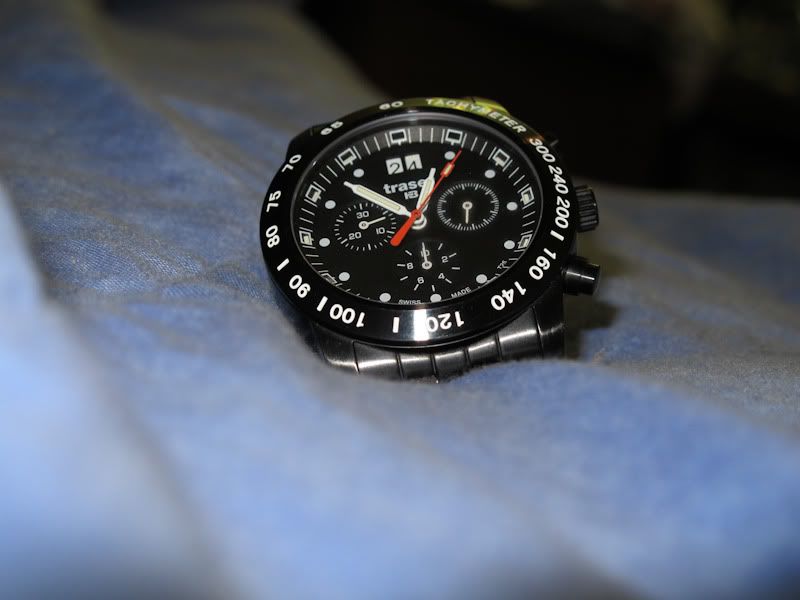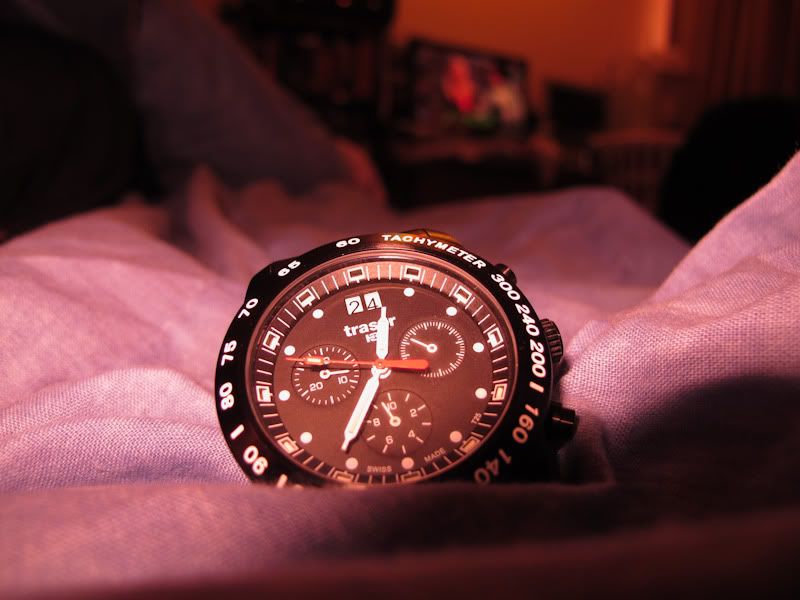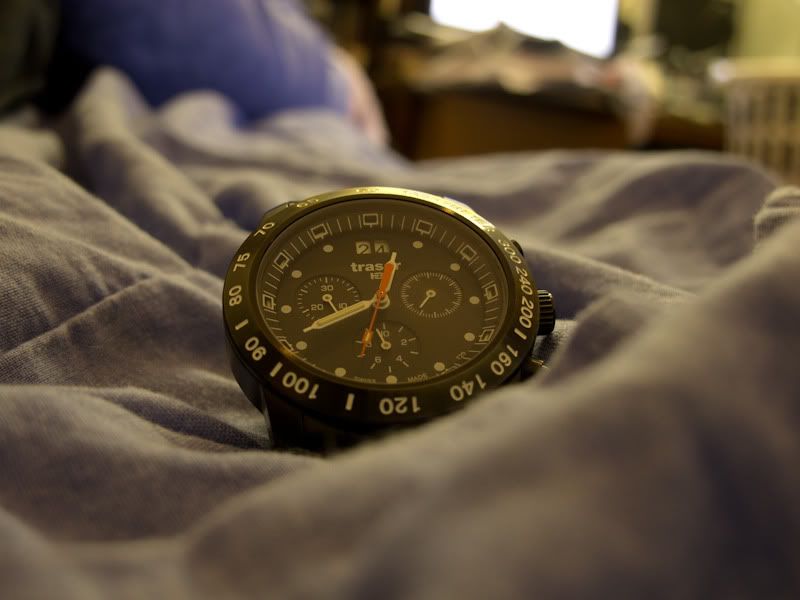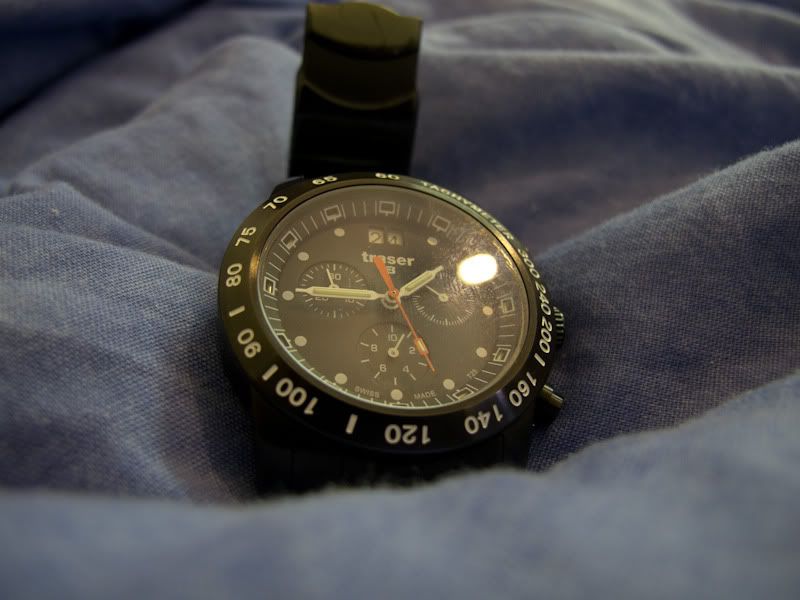Rather than post multiple threads asking lots of questions, I figured I'd post in this one.
I've been reading "From snapshots to great shots" by Jeff Carlson. Learning a lot about the G12, things I can do. The big thing for me has been to go into manual mode and control aperture, ISO and shutter speed independently. I'm still trying to get the hang of things. Today, bored and supposedly studying, I took a few pics of my watch. The lighting conditions remained the same throughout. I tried to keep the ISO low to minimise noise. What I'd like help with is analysing what I'm doing wrong and why. I've reduced the photos from RAW to 800x600 JPEG but if it helps to use a different format, please advise me.
This is taken in fully automatic mode for comparison:

Here's my first shot:

ISO 100; F2.8; 1/80
Looks very colour cast so I changed the white balance to automatic:

ISO 125; F3.2; 1/8
This is the camera's HDR mode:

ISO 800, F3.2, 1/20

ISO 125, F2.8, 1/8
What I'm trying to do is take a pic similar to the first one. But if I switch to manual, I just get the watch screen in the way. Also, despite manual white balance adjustment (focussed on a white magazine cover), there's a slight colour cast which I can't get rid of. I'm also losing sharpness which the first pic has in the bezel numbers.
How can I get the camera to look "through" the glass screen? The first pic, because it was "automatic" was shot in JPEG, the rest were in RAW. Is this the camera's processing that's sharpening and correcting the pictures?